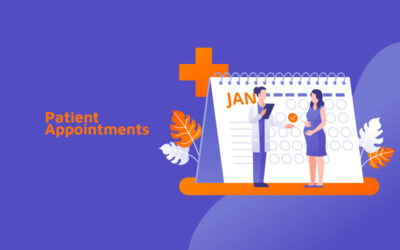Staying on top of dental coding and billing for surgical periodontal procedures can be a complex task for dental practices. Exceptional dental billing services can overcome the confusion and ensure proper claim submission. In this post, we’ll lists the dental codes for common periodontal surgical services and offers tips to help streamline your billing processes and maximize reimbursement.

Gingivectomy/Gingivoplasty
Gingivitis is the first stage of periodontitis. Gingivectomy is surgery to remove the diseased gum and gum tissue and/or recontour the soft tissues at the dentogingival complex. Gingivoplasty involves reshaping and contouring the healthy gum tissue surrounding the teeth and is usually done for cosmetic reasons.
D4210 Gingivectomy or gingivoplasty – four or more contiguous teeth or tooth bounded spaces per quadrant
D4211 Gingivectomy or gingivoplasty – one to three contiguous teeth or tooth bounded spaces per quadrant
D4212 Gingivectomy or gingivoplasty to allow access for restorative procedure, per toot
Dental Crown Lengthening
Proper fixing of dental crowns improves oral hygiene and comfort. A dental crown lengthening procedure aims to correct excess gum tissue covering the teeth. The procedure recontours gum tissue or bone to expose more of a tooth’s surface for a crown.
D4230 Anatomical crown exposure – four or more contiguous teeth or bounded tooth spaces per quadrant
D4231 Anatomical crown exposure one to three teeth or bounded tooth spaces per quadrant
D4249 Clinical crown lengthening – hard tissue
Gingival Flap
In gingival flap surgery, a gingival flap is created by folding the flap of gum tissue back. It allows access to the jawbone and the root of the tooth for the removal of the disease-causing bacteria. Irregular surfaces of the damaged bone may be smoothed to enable the gum tissue to better reattach to healthy bone.
D4240 Gingival flap procedure, including root planing – four or more contiguous teeth or tooth bounded spaces per quadrant
D4241 Gingival flap procedure, including root planing – one to three contiguous teeth or tooth bounded spaces per quadrant
D4245 Apically positioned flap
Osseous Surgery (flap debridement)
Osseous surgery, also called pocket reduction surgery or gingivectomy, is done when periodontal disease threatens not only gum tissue but the bone as well. The gums are separated from the teeth to obtain access to the tooth roots, supporting ligament, and bone tissue. After the inflamed gum tissue is removed, the roots, ligament, and bone tissue are treated.
D4260 Osseous surgery (including flap entry and closure) – four or more contiguous teeth or tooth bounded spaces per quadrant
D4261 Osseous surgery (including flap entry and closure) – one to three contiguous teeth or tooth bounded spaces per quadrant
Mesial/Distal Wedge
When there is a large cavity or decay between two molars, mesial wedge procedure is performed to the teeth. It involves placing a small wedge-shaped piece of material, such as a dental composite, between the two teeth to access the area, remove the bacteria, and fill the cavity.
D4274 Mesial/distal wedge procedure, single tooth (when not performed in conjunction with surgical procedures in the same anatomical area)
Guided Tissue Regeneration (regenerative surgery)
Guided Tissue Regeneration (GTR) is used to repair periodontal defects to improve teeth stability. Soft tissue taken from elsewhere in the mouth is sutured over the areas of recession. As the tissues grow together, they form a tight seal around the teeth and restore a more natural, even gum line
D4265 Biologic materials to aid in soft and osseous tissue regeneration, per site
D4266 Guided tissue regeneration, natural teeth – resorbable barrier, per site
D4267 Guided tissue regeneration, natural teeth – non-resorbable barrier, per site
Gum Graft Surgery
Gum graft surgery involves covering the exposed root to help prevent additional recession and bone loss. Bone grafting replaces missing bone.
D4270—Pedicle soft tissue graft
This procedure code can be used to report the tunneling procedure technique or the Chao Pinhole Surgical Technique. It involves augmenting the gingiva to obtain adequate root coverage.
Other Codes for Surgical Periodontal Procedures
D7971 Excision of pericoronal gingiva
D4346 Scaling in presence of generalized moderate or severe gingival inflammation – full mouth, after oral evaluation
D4910 Periodontal maintenance
D4921 Gingival irrigation with a medicinal agent – per quadrant
In addition to choosing the correct codes for specific patient visits, accurate coding also depends on understanding which codes must be “bundled” for complex treatments such as periodontal flap surgery, particulate graft, regenerative biologic, membrane.
D4910 Periodontal Maintenance
Individuals who had a periodontal procedure require periodontal maintenance. According to the American Dental Association (ADA), periodontal maintenance is often denied because many carriers have limited benefits for this procedure. Each carrier has different policies/limitations for this procedure, with some limiting this procedure to being paid as a benefit only within 2 to 12 months of scaling and root planing (SRP).
For reimbursement of D4910, many payers require an examination, targeted periodontal probing, and a periodontal diagnosis. Tips for minimizing claim denials for periodontal maintenance:
- Providing documentation to support any unusual circumstances that require a different interval of treatment than the one specified in the patient’s plan documents.
- If a patient is covered under a new group policy, submitting documentation of the patient’s history of treatment with the initial claim for D4910 will help in the determination.
ICD-10 Codes
ICD codes may be used along with CDT codes on claims submitted to dental benefit plans when needed. Diagnosis codes are always required on claims for dental services submitted to medical benefit plans. ICD-10 codes in claims filed for dental benefits inform the payer why the procedure was performed and the associated disease, illness, symptom or disorder. The appropriate diagnosis code should be selected based on the patient’s present condition(s).
The ICD-10 codes for Periodontics Surgical Services include:
K05.0 Acute gingivitis
K05.00 Acute gingivitis, plaque induced
K05.01 acute gingivitis, non-plaque induced
K05.1 Chronic gingivitis
K05.10 Chronic gingivitis, plaque induced
K05.11 Chronic gingivitis, non-plaque induced
K05.2 Aggressive periodontitis
K05.20 Unspecified aggressive periodontitis
K05.21 Aggressive periodontitis, localized
K05.221 Aggressive periodontitis, generalized, slight
K05.222 Aggressive periodontitis, generalized, moderate
K05.223 Aggressive periodontitis, generalized, severe
K05.3 Chronic periodontitis
K05.30 Chronic periodontitis, unspecified
K05.311 Chronic periodontitis, localized, slight
K05.312 Chronic periodontitis, localized, moderate
K05.313 Chronic periodontitis, localized, severe
K05.319 Chronic periodontitis, localized, unspecified severity
K05.321 Chronic periodontitis, generalized, slight
K05.322 Chronic periodontitis, generalized, moderate
K05.323 Chronic periodontitis, generalized, severe
K05.329 Chronic periodontitis, generalized, unspecified severity
K05.4 Periodontosis
K05.5 Other periodontal diseases
K05.6 Unspecified periodontal disease
K06.0 Gingival recession
K06.1 Gingival enlargement
K06.2 Gingival and edentulous alveolar ridge lesions associated with trauma
K06.8 Other specified disorders of gingiva and edentulous alevolar ridge
K06.9 Disorder of gingiva and edentulous alveolar ridge, unspecified
Tips to Improve Dental Reimbursement
Claims should be submitted using the correct codes and including proper clinical documentation is essential. Here are some tips to help timely and appropriate reimbursement, and avoid noncompliance:
-
- Documentation: Include supporting documentation such as treatment notes, X-rays, and diagnostic reports. As missing documentation can lead to claim denials, it’s important to understand the specific requirements of each insurance payer.
- Know payer rules: When contracting with a payer, understand their covered services, fee schedules, and any limitations.
- Ensure smooth coordination of benefits in dental billing:
- Determine if the patient has dual dental insurance coverage.
- Submit the claim to the primary insurer first, following their guidelines and including all necessary documentation.
- After the primary insurer processes the claim, review the Explanation of Benefits (EOB) to determine the remaining patient balance.
- Submit the remaining balance to the secondary insurer, including a copy of the primary insurer’s EOB and any additional supporting documents required by the secondary payer.
Adhering to each payer’s specific submission requirements is key to avoiding delays or denials in the dental billing process. Appeals processes, understanding an EOB, and dental insurance verification can also pose challenges for dental practices. As dentists focus on treatment, partnering with an experienced dental billing company is a practical way to ensure accurate coding of periodontics surgical services for reimbursement purposes.


Struggling with complex dental claim submissions?
Learn how our dental billing services can help!




